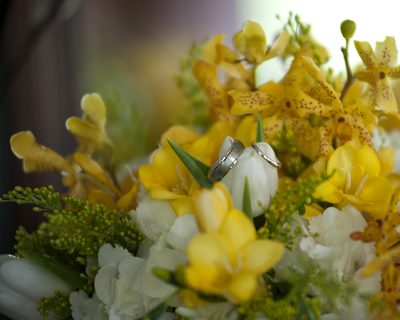Capturing Beauty in Ordinary Objects
We all have the ability of Capturing Beauty in Ordinary Objects we just need to look with new eyes. All around us is beauty. This is especially lovely for weddings or special occasions.
-
The Subject
Usually the most beautiful photos or ordinary objects are close ups. So… beautiful close-up iPhone photos of nature, including flowers, leaves, feathers, spider webs and water droplets. If you are taking this with your phone generally produce images that have a large depth of field. This means that when you take a shot you have good sharp focus throughout your image. But when you take a close-up shot, you’ll discover blur your background. Getting close to the subject results in a shallower depth of field where only part of the image will be in sharp focus.This means that focussing on the desired part of a close-up image is essential in order to get your main subject in sharp focus. Think about the composition of your shot, and which part of the image you want to be in focus. Then tap the iPhone’s screen on the subject that you want in focus. You’ll see on the screen whether or not that part of the image sharpens as the background drops out of focus. It may take several attempts to get the focus exactly right, and you may need to move nearer or further away from your subject to achieve sharp focus. Another tip that I find helpful in achieving the desired focus is to zoom in slightly on your subject. Pinch the screen to zoom in and out. As you do this you’ll see a slider appear on the screen which you can also use to zoom. Be careful about how much you zoom in though as that will affect the final image quality. Too much zoom will result in a poor quality and grainy image.
2 Minimal is best
Try a plain background to really give your subject center stage. Getting down low allows you to fill the background with sky which allows for minimal distraction from the shapes of your subject.A textured, uniform background such as a wall, fence or rippled water can also provide a great backdrop for your subject. Think about the distance your subject is from a fixed background. As you increase the distance and focus on your subject, the loss of focus of the background ensures that it’s not distracting and that your subject stand out clearly.
3. Think about your composition.
Use the rule of thirds. Imagine your viewfinder to be divided into nine equal sections, then think about lining up elements of your image along these lines or at the places where the lines intersect. In the image below, the focal point lies at the top right intersection of the thirds lines, and the background fills the bottom third of the image. To help you visualize the rule of thirds when shooting, turn on the grid setting in the native camera app (Settings > Photos & Camera > Grid).Always think carefully about how you place your subject in your shot. Sometimes you’ll want to include the entire subject, but as you get closer this may not be possible. Choosing which part of the subject will fill the frame allows further artistic control of the image. If I’d chosen to photograph the entire dandelion in the photo above, it wouldn’t have been possible to show the detail that becomes apparent with a closer cropped image.
4. Use a different angle
Try crouching down low, or even lying on the ground, so that you can. Try shooting low. Looking up from beneath some plants or flowers will change your subject completely, creating a more unique view of the scene. By changing your position relative to the sun, you can use that bright light to highlight color and detail as it shines through the petals. This is for Capturing Beauty in Ordinary Objects.
Background: When taking a photo of something close up, it’s very easy to forget about what appears in the background of your image. So always make sure you think about the bigger picture.Ensure there are no items that will distract from the main subject of your image, and keep an eye on the horizon. It’s all too easy to end up with a 45 degree horizon! Your choice of background for your subject can also enhance the final image. Choose a natural background canvas such as grass, a wall, or sky by changing the angle you take your shot from. Background choice also gives context to an image. You’re outside, getting close to nature, so let that be felt in your image.
5. Look for the unique
Nature is full of wonderful surprises, and the unusual often make great photo opportunities. A falling oak leaf caught and suspended by a fine strand of spider web made for a great shot on a foggy morning. The combination of the foggy backdrop and the close-up view of the leaf work together to make sure the leaf stands out in the shot. In the photo below, a delicate feather caught in tall grass in the summer provided a similar opportunity.


